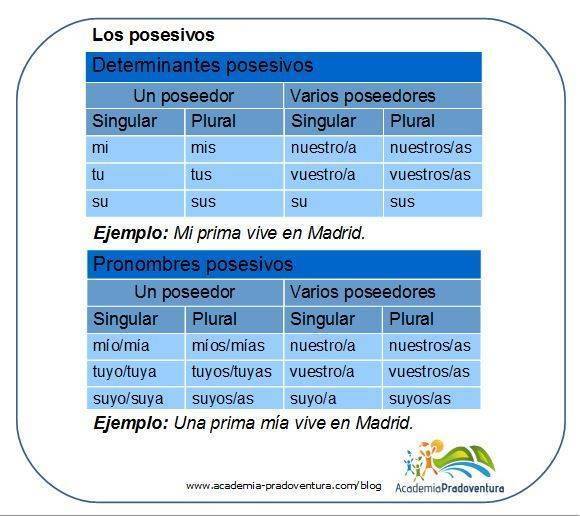” ¿De quién es el libro?” ” Es mi libro./Es mío.” or “Es tu libro./Es tuyo.”.
In order to not confuse what belongs to whom, it is important to know how to use the possessive adjectives and pronouns, and that’s why this is an important grammar topic in the A1 level. They indicate property and possession and there are two types in Spanish. On the one hand there are the possessive adjectives that are placed in front of the noun and on the other hand there are the possessive pronouns that are placed behind the noun. Both of them always change their ending according to the number of the noun. Only the possessive pronouns additionally change their ending according to the gender of the noun that they refer to.
In the following video, our Spanish teacher Ángeles explains how to use the possessive pronouns, so that at the end “your book” still is “yours”.
Want to keep learning Spanish? Sign up for our fun online classes! For more information click here.

Attention: “El libro es para mí.” (mí = object pronoun) is spelled with an accent, while “Es mi libro.” (mi = possessive adjective) is spelled without an accent. These two forms are easily confused, even by native Spanish speakers.
We hope this video helps you to understand how to use the possessive pronouns and suggest that you practise their use making up Spanish sentences about possession and propertt. If you have any question or query, just leave a comment and we will help you. Enjoy studying! 😉





